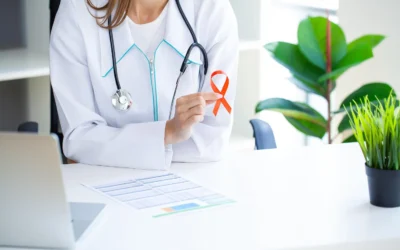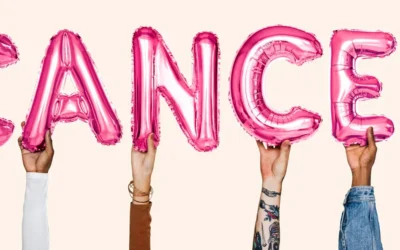Alcohol, once glamorized in media and social settings, is now under growing scrutiny from the healthcare community. A deepening public health crisis has emerged: alcohol-related cancer deaths in the United States have nearly doubled over the past three decades. While tobacco and obesity have long dominated the cancer prevention discourse, alcohol is now earning recognition as a Group 1 carcinogen—a classification it shares with asbestos and radioactive materials.
This article examines the clinical evidence, epidemiological trends, and actionable health insights surrounding alcohol’s role in cancer. We also address what needs to change in public health communication, regulatory policy, and patient education to confront this growing threat.
Table of Contents
A Troubling Trend: Deaths from Alcohol-Related Cancers Nearly Double
According to the latest long-term data, annual alcohol-associated cancer deaths in the United States rose from 11,896 in 1990 to 23,207 by 2021. This dramatic increase—amounting to a 95% rise—suggests that while other cancer risk factors have seen improved control, alcohol remains under-addressed.
Table 1: Increase in Alcohol-Related Cancer Deaths (1990–2021)
| Year | Alcohol-Related Cancer Deaths |
|---|---|
| 1990 | 11,896 |
| 2000 | 14,780 |
| 2010 | 18,405 |
| 2021 | 23,207 |
This data points to a failure in both public health messaging and preventive intervention. Notably, the burden has not been distributed equally across the population.
Who Is Most Affected?
The increase in alcohol-related cancer mortality disproportionately affects:
- Men, who account for the majority of deaths, largely due to higher average alcohol consumption.
- Individuals aged 55 and older, whose cumulative lifetime exposure to alcohol raises their long-term risk.
Several socioeconomic and behavioral factors contribute to this demographic pattern, including cultural norms, alcohol marketing practices, and the aging population’s lower rate of alcohol cessation despite mounting health issues.
Alcohol and Carcinogenesis: Understanding the Mechanisms
Alcohol’s role in cancer is not theoretical—it is mechanistically and epidemiologically validated. The International Agency for Research on Cancer (IARC), part of the World Health Organization (WHO), classifies alcoholic beverages as a Group 1 carcinogen, meaning there is sufficient evidence to confirm alcohol causes cancer in humans.
How Does Alcohol Cause Cancer?
- Acetaldehyde Formation
Ethanol, the active ingredient in alcoholic beverages, is metabolized in the liver to acetaldehyde, a known toxic and carcinogenic compound. Acetaldehyde damages DNA and impairs cellular repair mechanisms, promoting mutations that can initiate cancer. - Oxidative Stress
Alcohol consumption increases the production of reactive oxygen species (ROS). These unstable molecules induce oxidative damage to lipids, proteins, and DNA, further contributing to carcinogenesis. - Impaired Nutrient Absorption
Chronic alcohol use disrupts the absorption of critical nutrients such as vitamins A, B-complex, C, D, and E, as well as folate. These nutrients play key roles in DNA repair and immune function, both essential defenses against cancer. - Hormonal Changes
Alcohol raises estrogen levels, particularly in women, contributing to the development of hormone-sensitive cancers, including breast cancer.
The Scope of Impact: Cancers Causally Linked to Alcohol
While alcohol is often associated with liver damage or addiction, its cancer-related dangers are much broader. The following cancers have established causal links to alcohol consumption:
- Oral cavity
- Pharynx (throat)
- Larynx (voice box)
- Esophagus
- Liver
- Breast (especially in women)
- Colon and rectum
Table 2: Cancers with Established Links to Alcohol
| Cancer Type | Strength of Association | Notes |
|---|---|---|
| Oral cavity | High | Risk increases with quantity and frequency. |
| Throat (pharynx) | High | Often compounded by tobacco use. |
| Larynx | High | Chronic inflammation accelerates risk. |
| Esophagus | High | Especially for individuals with ALDH2 mutation. |
| Liver | High | Synergistic with hepatitis and cirrhosis. |
| Breast | Moderate to high | Risk increases even with light consumption. |
| Colon and Rectum | Moderate | Elevated risk at both moderate and high intake levels. |
Spotlight: Alcohol and Breast Cancer
One of the most underappreciated risks is alcohol’s impact on breast cancer, particularly in women over 40. Even light drinking—defined as one drink per day—is associated with a 12–15% increased risk of breast cancer compared to women who drink less than one drink per week.
This increased risk is thought to be mediated by alcohol-induced estrogen elevation and DNA damage to breast tissue cells. Many women are unaware of this connection, and alcohol remains socially normalized in many communities and professional environments.
Public Perception: A Knowledge Gap
Despite clear scientific consensus, public understanding remains dangerously low. In a 2019 national survey, only 45% of Americans recognized alcohol as a cancer risk factor. In contrast, 91% acknowledged the risk from radiation, and 89% from tobacco.
This lack of awareness is more than a statistical curiosity—it’s a barrier to informed decision-making and effective prevention.
Table 3: Risk Factor Recognition Among U.S. Adults (2019)
| Risk Factor | Public Recognition (%) |
|---|---|
| Tobacco | 89% |
| Radiation | 91% |
| Alcohol | 45% |
| Obesity | 66% |
| Pollution | 78% |
The U.S. Surgeon General addressed this gap in January 2025 by issuing a formal advisory identifying alcohol as the third leading preventable cause of cancer, following tobacco and obesity. The advisory urged mandatory cancer warning labels on alcoholic beverages and tighter regulation of alcohol marketing.
Changing Cultural Trends: A Decline in Youth Drinking
There is, however, a glimmer of hope. Younger generations—especially Gen Z—are drinking less. Motivated by health, financial, and mental well-being concerns, Gen Z consumers are turning to non-alcoholic alternatives, practicing mindful drinking, or abstaining altogether.
This decline has also affected alcohol industry sales, with many major corporations seeing stagnating or falling profits. For public health advocates, this trend represents a unique opportunity to reinforce behavior change with education and prevention campaigns.
Is There a “Safe” Level of Alcohol?
The idea of “moderate” drinking has been widely circulated for decades. However, modern research suggests there is no completely safe level of alcohol consumption when it comes to cancer.
While the risk increases with the quantity consumed, even low levels of alcohol are associated with a measurable rise in cancer risk. This stands in stark contrast to older guidelines that claimed one or two drinks a day could be part of a healthy lifestyle.
Prevention and Policy: What Can Be Done?
The rising tide of alcohol-related cancer deaths underscores the need for coordinated action at both the clinical and policy-making levels.
Public Health Strategies to Consider:
- Cancer Warning Labels: Similar to those on cigarettes, clear and mandatory warning labels could deter high-risk consumption.
- Healthcare Provider Counseling: Doctors and nurses should incorporate alcohol screening and cancer risk education into routine visits.
- Media Campaigns: National media campaigns highlighting the alcohol–cancer link could raise awareness among at-risk populations.
- School-Based Interventions: Educating students early about alcohol’s long-term risks can shape healthier behaviors.
- Community Partnerships: Working with local organizations, religious institutions, and workplaces to reduce alcohol availability and increase awareness.
Clinical Advice: Reducing Risk Starts with Awareness
For patients and healthcare professionals alike, the conversation around alcohol needs to evolve from moderation to mitigation. Some practical steps include:
- Limit consumption to no more than one drink per day for women and two for men—but less is better.
- Consider alcohol-free days throughout the week.
- Switch to non-alcoholic options when social drinking is expected.
- Track intake using apps or journals to maintain awareness.
- Speak with a healthcare provider about personalized risk and cessation support.
Conclusion: Alcohol and Cancer—The Link We Can No Longer Ignore
Alcohol-related cancer is a growing, yet under-recognized threat to public health in the United States. With mortality numbers nearly doubling over 30 years and strong evidence confirming alcohol’s carcinogenic nature, it’s time for a paradigm shift in how we address this risk factor. From healthcare provider training to federal-level policy reform and individual behavior change, action is needed now more than ever.
As the science becomes increasingly conclusive, UDSHealth.com encourages both patients and providers to prioritize education, prevention, and early intervention. Cancer is complex, but alcohol-related cancer risk is one of the few modifiable factors we can tackle today.





0 Comments